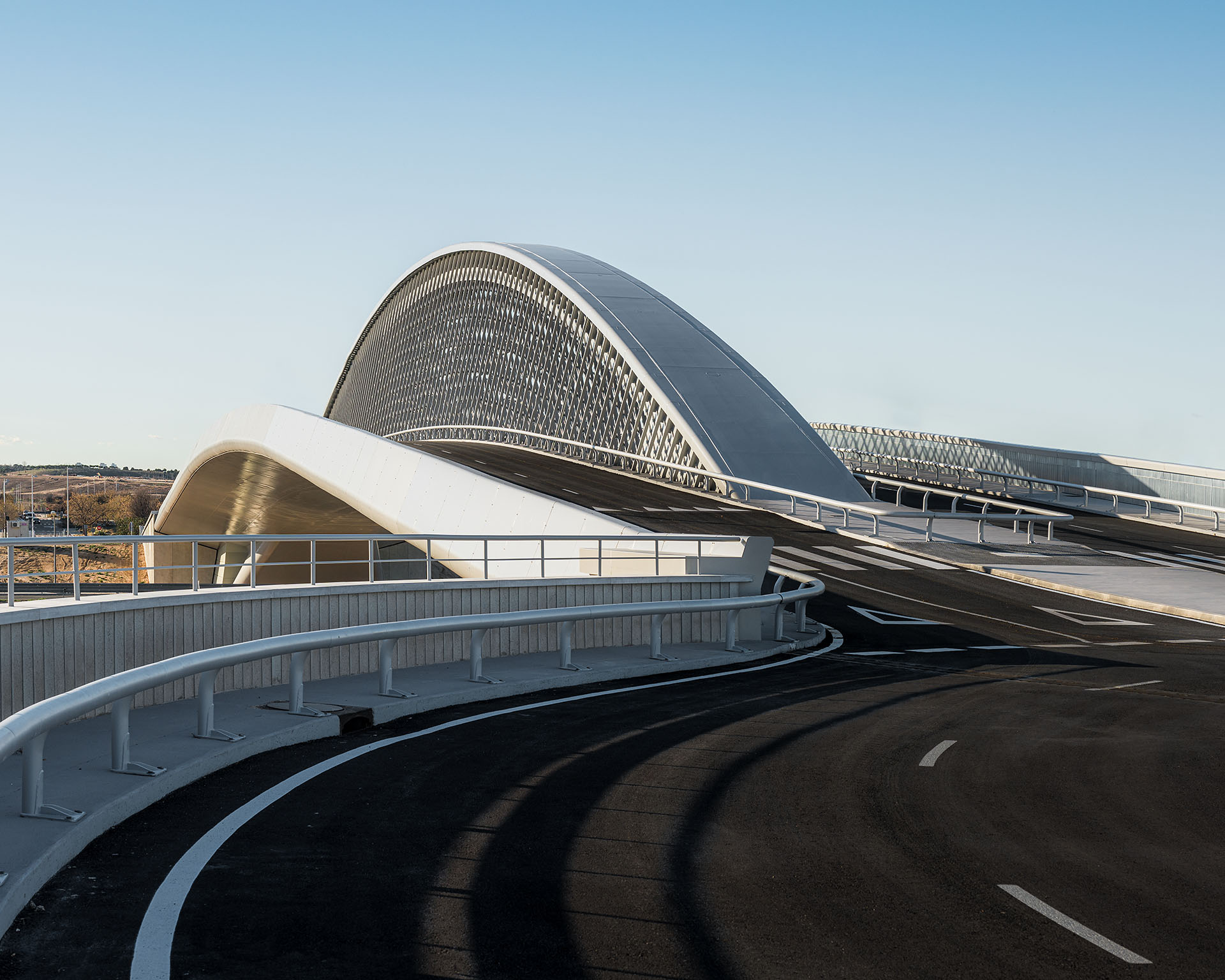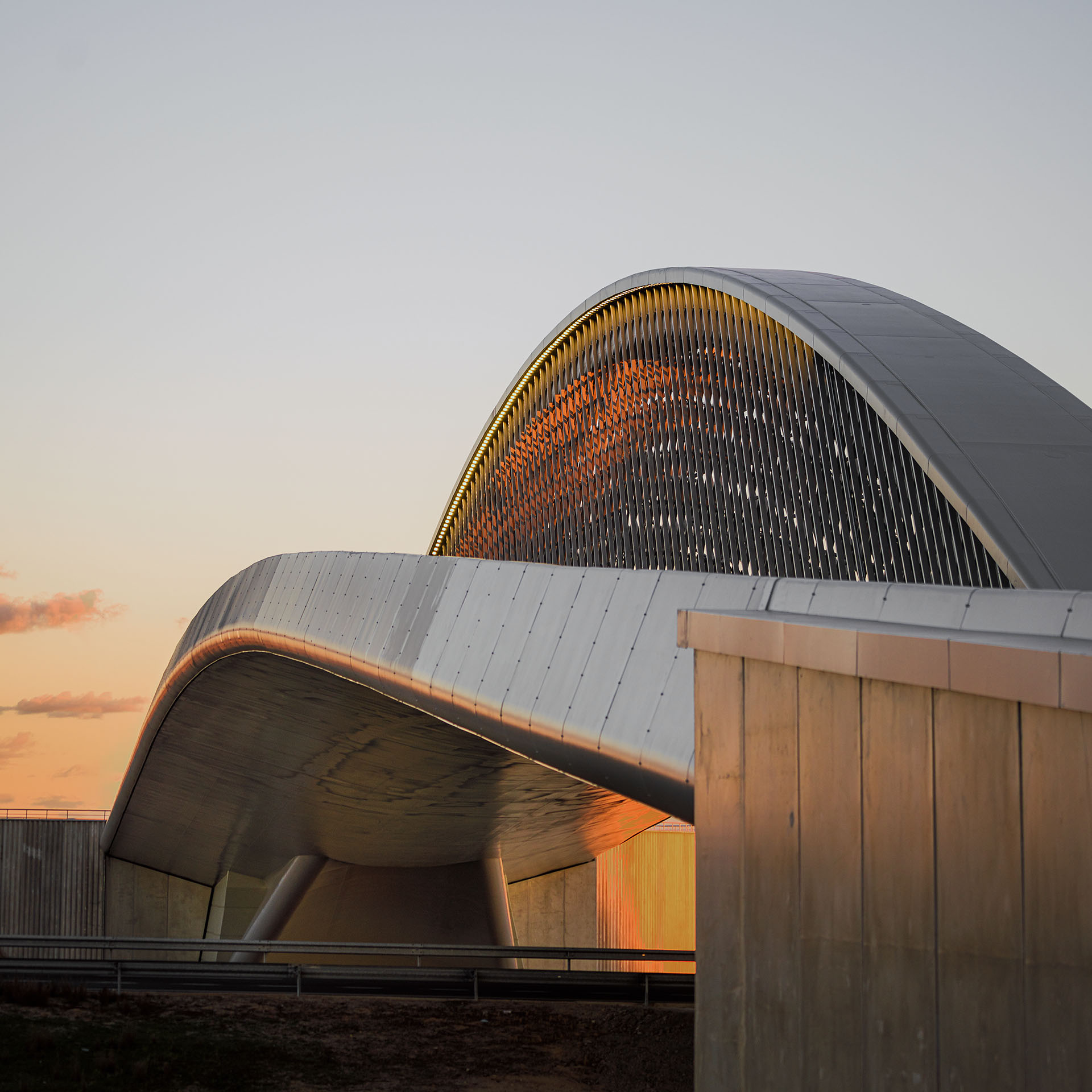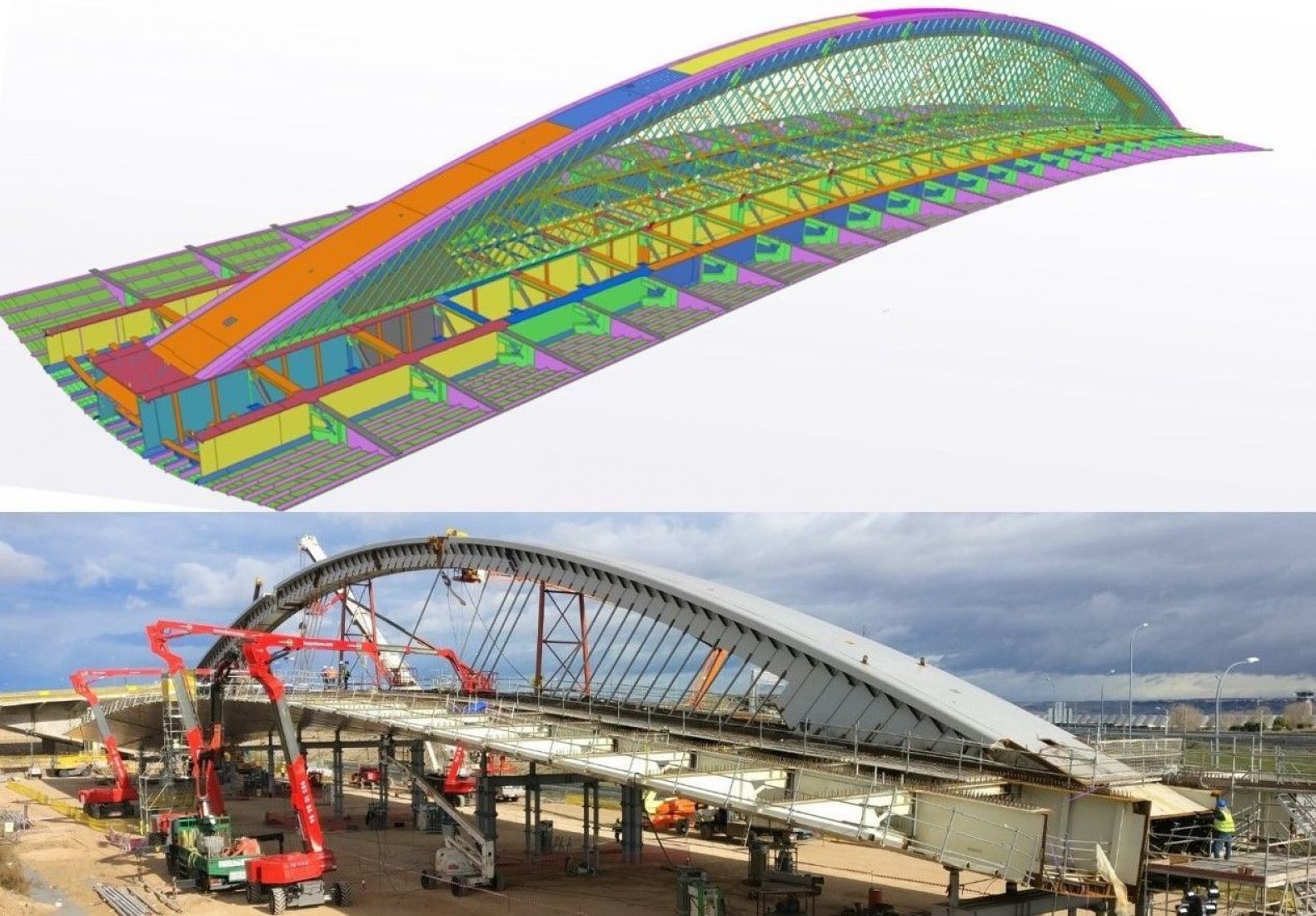Its image recalls the aeronautical shapes of the nearby T4, and its unique structure does not use braces between the arch and the base, but rather the board hangs from a mesh or permeable lattice of tubular steel profiles, which generates a play of lights and transparencies. that vary depending on the time of day.
Among the challenges of its construction process was the installation of the central section of the 130-meter bridge, for which it was necessary to mount the structure on a side platform parallel to the M-12 and then move it for six days to its final position.

Concordia Bridge between T4 and Valdebebas. Photograph by Imagen subliminal.

Concordia Bridge between T4 and Valdebebas. Photograph by Imagen subliminal.
Project description by Emilio Rodríguez Jiménez, Francisco José Domouso de Alba, Lorenzo Fernández-Ordóñez Hernández, Francisco Millanes Mato.
This project was the winner of an ideas competition in which 12 other proposals participated in June 2007. During 2008 the construction project was drawn up.
The competition proposed a “singular” bridge, as an entrance to Madrid from T4 and the new neighborhood of Valdebebas, which was responsible for its financing. This iconic character was proposed to be obtained with an object that was resounding in its formal limits, and with a curved geometry that generated a soft, warm, and heavy organoleptic reading, like a burnished tool.
The projected bridge is deliberately objectual, with clear and precise geometry, closer to industrial designs or the aviation industry than the traditional engineering vision of arch and deck roads. The material and curve continuity resembles that of an airplane whose interior structure can be seen, in which a hollow and light frame formed by longitudinal spines and transverse ribs can be sensed. The most relevant and unique formal aspect of the design is developed from a double “diagrid” or permeable structural mesh, from which the arch board hangs and which, as a plane of great rigidity, materializes the soul, in mesh or lattice, of the large beam of variable height into which the cable-stayed arch is transformed. The “diagrid” is designed in a double plane on each side of the spine of the structure, forming a quadruple staggered mesh that, while guaranteeing the necessary visual transparency, gives it a dynamic character, generating multiple lights and shadows that They reverberate and enrich the visual sensations of the perspectives. The “diagrid” proposal provides the novelty of a solution that rescues the dense lattice structural typology of the late 19th century, highlighting the slenderness of the lowered arch and the dynamic appearance presented by the entire structure.
It is an arch bridge. The span it spans is 160 meters, with a width of 24.50 m (two lanes in each direction). The structure of the bridge is completely made of steel (arch, diagrid, deck, abutments, parapets, and interior side sidewalk finishes). The entire metal structure of the bridge is finished with a gray paint, RAL9006.






































